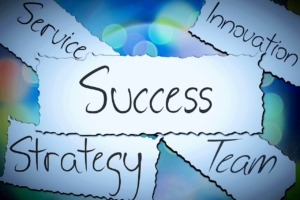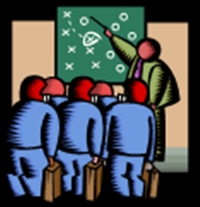Using A Customer Service Culture To Drive Profit
By Patty Crabtree
In the ever-evolving business landscape, customer service remains a critical function that has been significantly impacted by the pandemic and the trend of employee turnover.
However, amidst these challenges lies a tremendous opportunity. Businesses can establish a customer service culture that not only sets them apart from competitors but also drives long-term success and profitability. Understanding the customer’s perspective is paramount in creating a customer-centric environment.
Consider this eye-opening statistic from a Harvard Business School study by Reichheld and Schefter: a mere 5 percent increase in customer retention can lead to a remarkable profit increase ranging from 25 percent to 95 percent (HBS Working Knowledge, July 10, 2000). This highlights the undeniable impact customer service has on the bottom line.
Bain & Company, a global business consulting leader, reports that repeat customers spend up to 67 percent more with a company during months 31 to 36 than in the initial six months (Bain & Company, customerloyalty.com). It’s evident that taking care of existing customers provides a faster path to cash and fosters increased spending and referrals. As a result, astute business owners prioritize customer retention as a cornerstone of their strategy.

by rekre89
While customer service is often associated with rectifying issues, it is crucial to shift the narrative and view service as an experience that can proactively prevent problems. Too often, businesses design their operations around the expectations of an ideal customer, disregarding the fact that most customers are not perfect.
To truly meet customer needs, organizations must serve customer preferences and anticipate customer requirements in advance. This approach not only enhances customer satisfaction but also minimizes costs, reinforcing the brand and creating a lasting positive impression.
In a notable customer service encounter, Jacob, a representative for a finance company, demonstrated a thoughtful focus on customer care. During a conversation with a potential client, Jacob listened attentively as the client shared their struggles and concerns leading to needing a loan as they inquired about their potential interest rate.
Thoughtfully taking the potential client’s anxiety into account, Jacob said, “This is what we are going to find out together.” This simple statement created a partnership between Jacob and the potential client, putting the prospect at ease and energizing the conversation.
By guiding the potential client through the screening questions with understanding and support, Jacob’s approach fostered a sense of trust and ensured the prospect felt heard and valued. Through this empathic approach, Jacob illustrated the transformative power of a customer-centric mindset, highlighting the importance of partnership and understanding in delivering exceptional customer service experiences.
While this story illustrates working with a prospect, the mindset of being in it together with your customers is critical to a successful customer service culture.
At the heart of a successful customer service culture lies the belief that customer support is not limited to a single department but rather filters through every aspect of the organization.
Adopting Home Depot’s adage, “If you’re not supporting the customer or supporting those who do, what is the value of your job anyway?”, is crucial for establishing a customer-centric mindset that resonates throughout the company. When customer service becomes an integral part of operations and every employee embraces it as their responsibility, the organization can achieve remarkable outcomes.

by Tumisu
One company took such an approach. Each department was challenged to define their customer path pointing back to the external client. This initiative aimed to instill the belief that every individual within the organization had customers to support, and that every action taken contributed to serving those external clients.
Not only did this shift in perspective lead to a profound cultural transformation, it also led to increased profitability. Employees realized that their roles extended beyond their specific departments, encompassing support for every customer within the organization, including their fellow co-workers. Silos were eliminated and processes were streamlined, replaced by a unified focus on providing exceptional service to all customers, both internal and external.
By embracing this holistic approach, the organization witnessed remarkable outcomes. Interdepartmental barriers dissolved as employees recognized the interconnectedness of their roles in delivering a seamless customer experience. The heightened sense of unity and shared purpose fostered collaboration, increased efficiency, and amplified customer satisfaction.
This inspiring story exemplifies how adopting a customer-centric mindset breaks down obstacles, promotes collaboration, and creates an organizational culture dedicated to serving all customers. By recognizing the value of every individual’s contribution and nurturing a shared commitment to customer support, companies unlock the full potential of their teams and deliver exceptional experiences to their customers.

by Milada Vigerova
In the pursuit of a customer service culture, it is vital to shift focus from solely nurturing prospects to consistently supporting existing customers. While businesses invest significant time and effort in the sales process, the post-sale phase is equally crucial. Implementing a comprehensive onboarding process allows businesses to not only collect essential contact and billing information but also begin building a deeper knowledge of their customers. Gaining insights into their preferred contact methods, mailing address, and personal interests enables businesses to tailor interactions and deliver personalized experiences.
Another vital aspect of a customer service culture is speed. Customers have increasingly high expectations when it comes to receiving prompt solutions. Surprising studies reveal that even minor delays can significantly impact a business. For instance, 20% of customers are deterred from making a purchase if an organization takes minutes to respond, and an additional 25 percent refrain from buying if it takes hours to receive an answer. Slow service not only frustrates customers but also results in lost sales, diminished loyalty, and reduced recommendations.
Furthermore, customer rage can initiate a harmful cycle of declining revenue, increased customer dissatisfaction, reduced employee morale, and higher job turnover. Although the Great Resignation may be a recent phenomenon, the trend of quiet quitting has long existed. To counteract this trend, organizations must prioritize creating a customer service culture by empowering employees, providing them with the necessary tools, and offering ongoing training to foster authentic engagement.
In conclusion, cultivating a positive customer service culture is pivotal for sustained business success. By prioritizing customer retention, proactively meeting customer needs, and fostering a customer-centric mindset throughout the organization, businesses can differentiate themselves, drive profitability, and achieve lasting success in a highly competitive landscape.

By Gerd Altmann
If you are open to a conversation about how to use a positive customer service culture to drive profit, or how our in-depth work style and personality assessment could help your team, please contact us at 310-453-6556, extension 403 or email us at dana@lighthouseconsulting.com and our website is www.lighthouseconsulting.com.
Patty Crabtree, Chief Executive Officer guides LCS clients seeking to improve culture design, human capital management, and develop or expand effective remote workforce initiatives. To this specialty she brings 25 years of Operations and Finance leadership, excelling in equipping and empowering profit-focused teams.
Lighthouse Consulting Partners, LLC
Testing Division provides a variety of services, including in-depth work style & personality assessments for new hires & staff development. LCP can test in 19 different languages, skills testing, domestic and international interpersonal coaching and offer a variety of workshops – team building, interpersonal communication.
Business Consulting for Higher Productivity Division provides stress & time management workshops, sales & customer service training and negotiation skills, leadership training, market research, staff planning, operations, ERP/MRP selection and implementation, refining a remote work force, M&A including due diligence – success planning – value creation and much more.
To order the books, “Cracking the Personality Code”, “Cracking the Business Code” and “Cracking the High-Performance Team Code”, please go to www.lighthouseconsulting.com.
If you would like additional information on this topic or others, please contact Lighthouse Consulting Partners LLC, Santa Monica, CA, (310) 453-6556, ext 410 pattyc@lighthouseconsulting.com & our website: www.lighthouseconsulting.com.
Permission is needed from Lighthouse Consulting Partners, LLC to reproduce any portion provided in this article. © 2024


 siblings, pets, or a close group of friends. They probably sacrifice for them and spend most of their free time with them.
siblings, pets, or a close group of friends. They probably sacrifice for them and spend most of their free time with them. An “I’m sorry” gift doesn’t necessarily have to cost a lot; it depends on how big the mistake was.
An “I’m sorry” gift doesn’t necessarily have to cost a lot; it depends on how big the mistake was.

 Regardless of the status of the current information technology, that is utilizing an existing system or entering into the selection process of a new one, it is essential that the TOM and value to be derived are clearly defined. That is, just how will we as an organization measure the ERP value and, equally important, how will our customers measure us to decide if we are in fact successful in implementing our strategy. In addition to this measurement is the strategic plan. It must be reflective of where we want the business to be and how we will measure our success.
Regardless of the status of the current information technology, that is utilizing an existing system or entering into the selection process of a new one, it is essential that the TOM and value to be derived are clearly defined. That is, just how will we as an organization measure the ERP value and, equally important, how will our customers measure us to decide if we are in fact successful in implementing our strategy. In addition to this measurement is the strategic plan. It must be reflective of where we want the business to be and how we will measure our success.



 Prepare (or refine) your customer service response plan. Now that you’ve brainstormed with your management team, put it into action.
Prepare (or refine) your customer service response plan. Now that you’ve brainstormed with your management team, put it into action.












